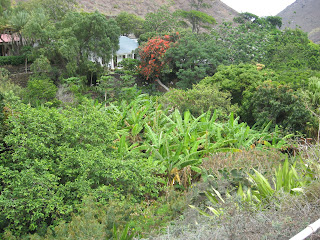By any standards 1812 was a significant year. It saw the only assassination of a British Prime Minister, Spencer Perceval, who was followed by Britain's longest serving Prime Minister, Lord Liverpool (1812-1827). As a reminder of the already troubled state of the Kingdom, it also saw Lord Byron's defence of the Luddites in his maiden speech in the House of Lords.
In Spain British success in the Peninsular War was capped in August by the entry of Wellington and his Portugues allies into Madrid. By that time Britain was involved in another conflict, against the young United States of America, which declared war in June and invaded Canada. This war, which was to see Britain burn the White House, was to end in British defeat at New Orleans in 1815, after the peace treaty had been signed. Perhaps its most significant result was the safeguarding of Canada from the expansionist republic to its south.
Most momentous of all though was Napoleon's invasion of Russia, his occupation of Moscow and the disastrous retreat which marked the beginning of the end of his rule and of French hegemony on the European continent. Earlier in the year though Napoleon had authorised usage of mesures usuelles, which marked the beginning of the metric system.
St. Helena 1812
Far away in the South Atlantic, the St Helena Governor Alexander Beatson had a far less troubled year than in 1811, the year of the mutiny.
The Judicial Records reveal that only three cases were tried - John Antonio was acquitted of stealing £20 from Frederick Schindler.
Thomas Bates was acquitted of stealing two bags of rice valued at £2 from Thomas O"Connor.
The only man found guilty was James Bicknell, for trying to defraud James Williams, "an illiterate person", by altering or causing to be altered the figures on an account. The Bench took this matter very seriously, telling the prisoner that his offence bordered on forgery, for which the penalty was death. James Bicknell was therefore jailed for four days, or until such time as he had repaid his debt. On the day of his projected release he was ordered to stand in the pillory, for two hours, in different parts of Jamestown. This appears to have been an unusual punishment at this time, although use of the pillory remained legal in the UK until 1837.
I have looked in vain for an appropriate image of a portable pillory, which this must have been. To my surprise, having led a sheltered life, I found you can now buy such items on ebay, suitable apparently for taking to adult parties.
Cattle Wormers and other matters
I have in an early post commented on the work of these unknown people who every quarter made their returns to the court. I am intrigued as to how they went about their business, presumably by examining animal excreta. Perhaps since they were called "extractors" they fed the animals with some substance to kill worms? The usually reliable google offers me no assistance.
Apparently the island was divided into three divisions, South, West and East. No worms were reported to have been extracted in the West Division in 1812. I was somewhat surprised to find that in January 1812 the Wormers reported that they had extracted a total of 631 worms, but only six in April and none in July. In October the figure was up to a more respectable 290.
Was the extraction of worms a seasonal matter I wonder, or was it a sign that sometimes the Wormers were otherwise engaged or simply could not be bothered? In the final session of the Court it was resolved that in future landowners would pay the court three pence for each worm found. The money received would be distributed to the Inspectors, "at the pleasure of the bench." I shall with added interest examine the returns of the Wormers in subsequent years to see whether the application of the principles of Adam Smith had any effect on their performance.
The Court also heard on another occasion that some 50 unlicensed dogs had been found on the island. It was resolved to fine owners of such dogs two guineas and to put down the unfortunate animals. It was also reported that the laws about dogs destroying sheep and goats would be enforced: owners would pay a five pound fine and double the value of the animal killed to the owner.
Also throughout the year the Coroner reported seven cases of accidental death, two of whom were identified as slaves. In the case of a third slave, Philip, it was reported that "he hanged himself, but that at the time of his death he was a Lunatic."
Such was life on St. Helena two hundred years ago.







































































